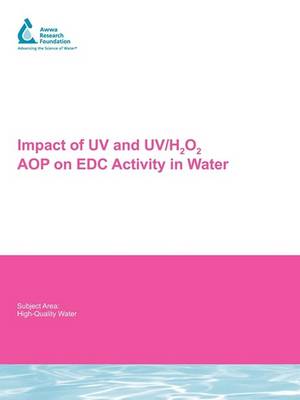Water Research Foundation Report
2 total works
Development of a Novel Method for the Analysis of Haloacetic Acids in Drinking Water
by Li Zhang and Raymond M. Hozalski
Published 31 May 2005
The main objective of this research was to develop a new approach for HAA analysis that was accurate, reproducible, sufficiently sensitive, and relatively safe and simple to perform. This method involved the use a CE ion analyzer for separation and detection of HAAs. Preliminary results from our laboratory using distilled and deionized water spiked with HAAs indicated that this approach was capable of separating and detecting all nine chlorinated and brominated HAAs. The method detection limit (MDL) for monochloroacetic acid measured in our laboratory was 32 ppb using a bubble cell without any sample pretreatment (i.e. direct aqueous sample injection). Given this unacceptably high MDL, more work was needed to fully develop and test the CE-based method especially with regard to improving method sensitivity. Originally published by AwwaRF for its subscribers in 2004. This publication can also be purchased and downloaded via Pay Per View on Water Intelligence Online - click on the Pay Per View icon below
Impact of UV and UV/H2O2 AOP on EDC Activity in Water
by Karl G Linden, S. W. Kullman, Kevin H. Oshima, G. Smith, Kai M. Udert, Judit Lienert, Kazuo Yamamoto, Chung-Hak Lee, Li Zhang, and Raymond M. Hozalski
Published 15 February 2008
Recent scientific studies have indicated that industrial and pharmaceutical chemicals in our water environment at very low levels may have significant impacts on human and environmental health. Many of these contaminants are not removed using conventional water treatment processes. The use of ultraviolet (UV) light for disinfection of water is becoming increasingly common. The use of UV for photolysis and oxidation holds promise as a clean, effective technology for transforming environmental pollutants of concern.
The goal of this research was to assess, through use of bioassays and chemical analyses, the degradation, by-product formation, and subsequent toxicity of endocrine disrupting contaminants (EDCs) following UV and UV/H2O2 oxidation treatment of water. Known EDCs were investigated for treatability and subsequent formation of estrogenic by-products over a range of UV operating points. Evaluations of treatment were made by analytical chemistry and by assessing changes in estrogenic activity utilizing both in vitro and in vivo based assays. UV light alone either from LP or MP sources at low or high UV fluences will not be effective for degradation of the estrogenic chemicals studied, therefore, utilities should not expect any effects on estrogenic contaminants under UV disinfection conditions. For effective treatment of the EDCs studied, and likely others, UV can be used in combination with low levels of hydrogen peroxide to achieve advanced oxidation conditions for destroying parent compounds and residual estrogenic activity.
The use of an estrogen screening assay should complement any chemical analysis when studying treatment processes that result in transformation of an estrogenic parent contaminant to its known or unknown breakdown products. These assays can monitor residual estrogenic activity of any by-products, monitor estrogenic activity for mixtures of pollutants, and provide an end point marker, indicating effective treatment levels.
The goal of this research was to assess, through use of bioassays and chemical analyses, the degradation, by-product formation, and subsequent toxicity of endocrine disrupting contaminants (EDCs) following UV and UV/H2O2 oxidation treatment of water. Known EDCs were investigated for treatability and subsequent formation of estrogenic by-products over a range of UV operating points. Evaluations of treatment were made by analytical chemistry and by assessing changes in estrogenic activity utilizing both in vitro and in vivo based assays. UV light alone either from LP or MP sources at low or high UV fluences will not be effective for degradation of the estrogenic chemicals studied, therefore, utilities should not expect any effects on estrogenic contaminants under UV disinfection conditions. For effective treatment of the EDCs studied, and likely others, UV can be used in combination with low levels of hydrogen peroxide to achieve advanced oxidation conditions for destroying parent compounds and residual estrogenic activity.
The use of an estrogen screening assay should complement any chemical analysis when studying treatment processes that result in transformation of an estrogenic parent contaminant to its known or unknown breakdown products. These assays can monitor residual estrogenic activity of any by-products, monitor estrogenic activity for mixtures of pollutants, and provide an end point marker, indicating effective treatment levels.

